ICD-10 Code For Autism

Understanding the Core of Autism Diagnostic Coding
Accurate diagnosis and coding of autism spectrum disorder (ASD) are crucial for effective treatment, insurance reimbursement, and research. The ICD-10 classification system, established by the World Health Organization (WHO) and adopted in the United States as ICD-10-CM, provides specific codes to describe various autism-related conditions. This article explores the ICD-10 codes related to autism, their application, diagnostic criteria, and differentiation within the spectrum.
Overview of ICD-10 Codes for Autism Spectrum Disorders
What is the ICD-10 code for autism?
The main ICD-10-CM code for autism is F84.0. This classification covers autistic disorder, also known as classic autism, as well as related conditions like infantile autism, infantile psychosis, and Kanner's syndrome. Clinicians often use this code when diagnosing and billing for autism spectrum disorder (ASD).
In addition to F84.0, healthcare providers may report other specific codes for related developmental disorders. For example, F84.1 is used for atypical autism, while F84.2 diagnoses Rett syndrome. F84.3 points to other childhood disintegrative disorder. Asperger's syndrome is classified separately under code F84.5, and F84.9 is reserved for pervasive developmental disorder, unspecified.
The range F80-F89 in ICD-10 covers different pervasive developmental disorders, providing a detailed framework for diagnosis. This classification helps differentiate between various autism-related conditions, guiding treatment planning, and reimbursement processes.
Effective October 1, 2024, these codes are utilized within the 2025 ICD-10-CM edition, aligning with updates for precise diagnosis and billing.
Proper use of these codes involves a combination of clinical criteria and standardized assessments, ensuring accurate classification of autism spectrum disorders for medical documentation and insurance claims.
Detailed Classification and Diagnostic Criteria in ICD-10
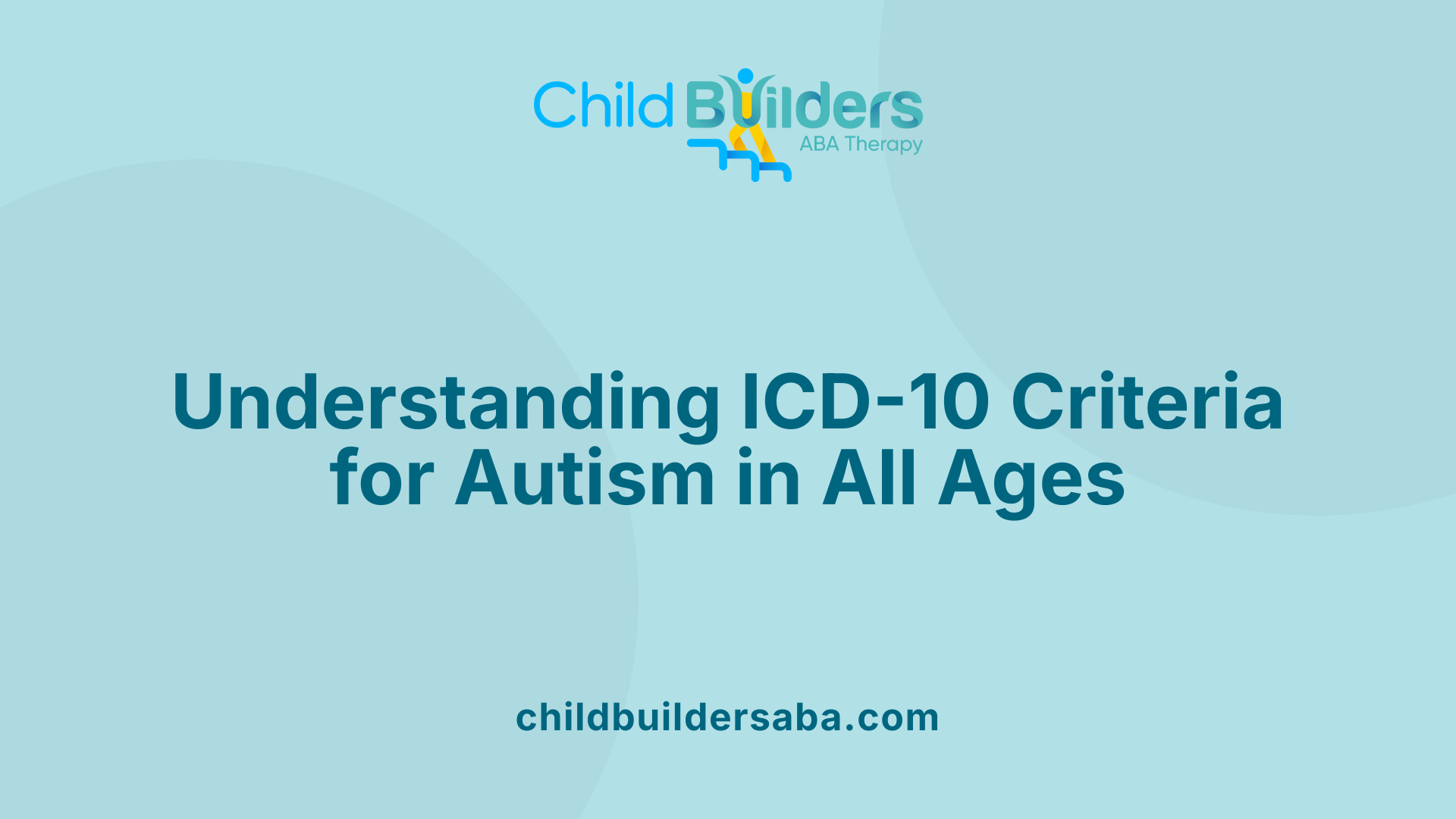
What are the ICD-10 criteria for autism in adults?
The ICD-10 criteria for autism, particularly under code F84.0 which denotes childhood autism, focus on persistent and specific developmental abnormalities that usually appear before the age of three. These include significant impairments in reciprocal social interactions, communication difficulties, and stereotyped or obsessively repetitive behaviors.
Children and adults diagnosed with F84.0 typically exhibit notable delays or abnormalities in speech and social engagement. The clinical picture is characterized by a pattern of severe impairments that impact daily functioning.
Atypical autism (F84.1) is used when symptoms begin after age three, or if the full criteria are not satisfied but similar features are present. This reflects cases with less pronounced symptoms or later presentation.
Diagnosis involves a comprehensive assessment that considers the person’s developmental history, behavior patterns, and severity of symptoms in social, communication, and behavioral domains. Clinicians often utilize standardized tools like the Autism Diagnostic Interview-Revised (ADI-R), Autism Diagnostic Observation Schedule (ADOS), or the DISCO to aid in accurate diagnosis.
Early recognition is essential for initiating appropriate intervention strategies, which can significantly improve developmental outcomes and quality of life.
Understanding these criteria helps healthcare providers distinguish autism spectrum disorder from other neurodevelopmental conditions and ensures proper access to support services.
Differentiation Between Autism Spectrum Disorders in ICD-10
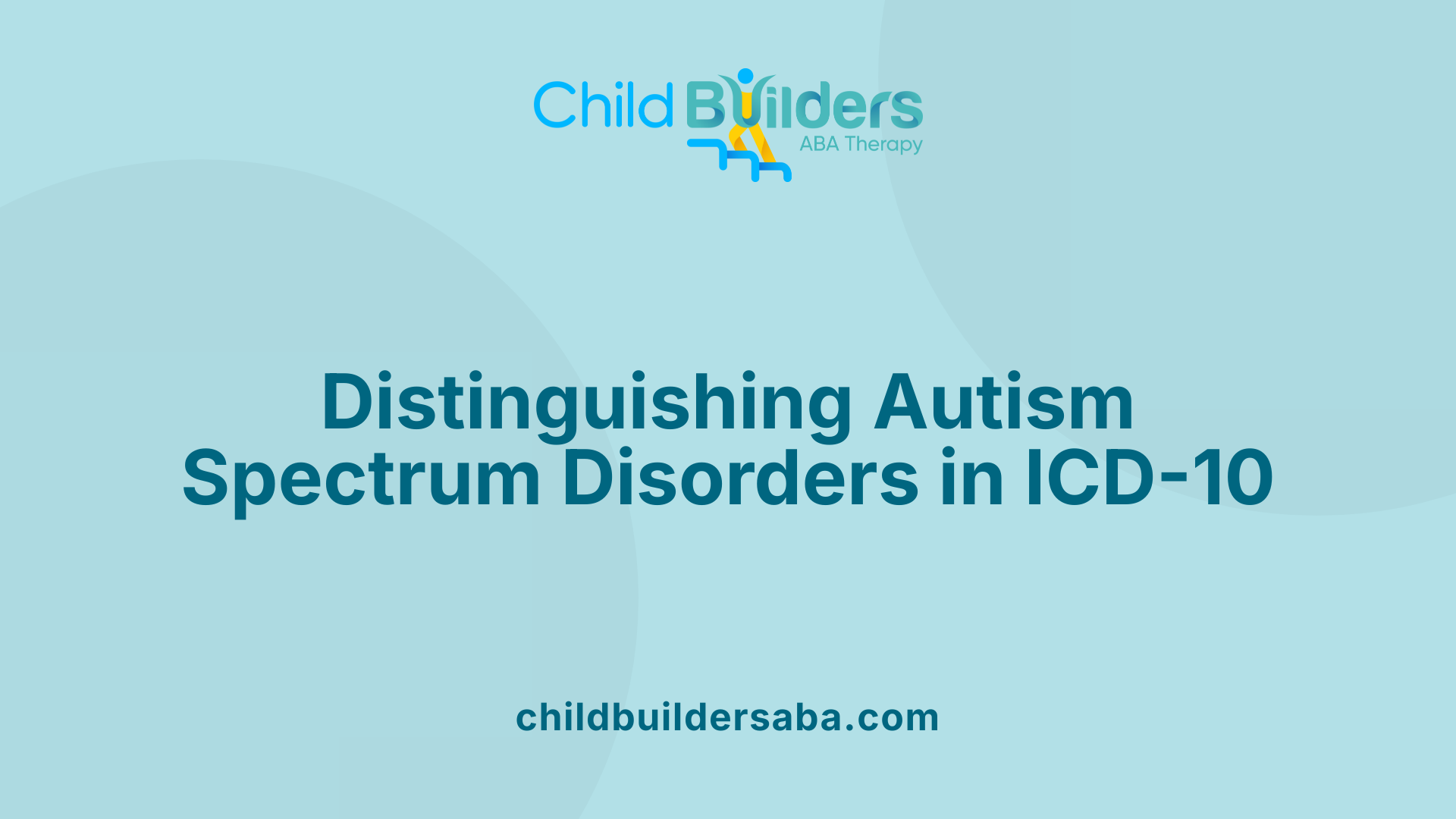
What is the ICD-10 code for autism spectrum disorder, including differentiations such as Asperger's syndrome?
In the ICD-10 classification system, the primary code for autism spectrum disorder is F84.0. This code covers several conditions historically grouped under autism spectrum disorder, such as infantile autism, infantile psychosis, and Kanner's syndrome.
However, Asperger's syndrome has its own specific ICD-10 code, which is F84.5. Unlike F84.0, this diagnosis is characterized by milder symptoms, primarily involving challenges with social interaction and communication, but typically without significant delays in language or cognitive development.
It's important to understand that, in ICD-10, Asperger's syndrome is not classified separately from other autism spectrum conditions under a different overarching code. Instead, it is incorporated within F84.5 as part of the spectrum, recognizing the overlap but also the distinctions based on severity and presentation.
The ICD-10 categorizes these disorders within the broader group of 'Disorders of psychological development' and specifically under 'Pervasive developmental disorders.' The classification aims to assist clinicians in diagnosing and coding autism-related conditions accurately for treatment, documentation, and reimbursement.
Recent discussions in scientific literature, such as in 'The Autism Matrix,' explore how social factors and the environment influence autism, complementing ICD coding but outside its strict diagnostic criteria. Overall, understanding these differences ensures proper diagnosis, treatment, and access to services for individuals across the autism spectrum.
Using ICD-10 in Clinical Settings and Billing Procedures
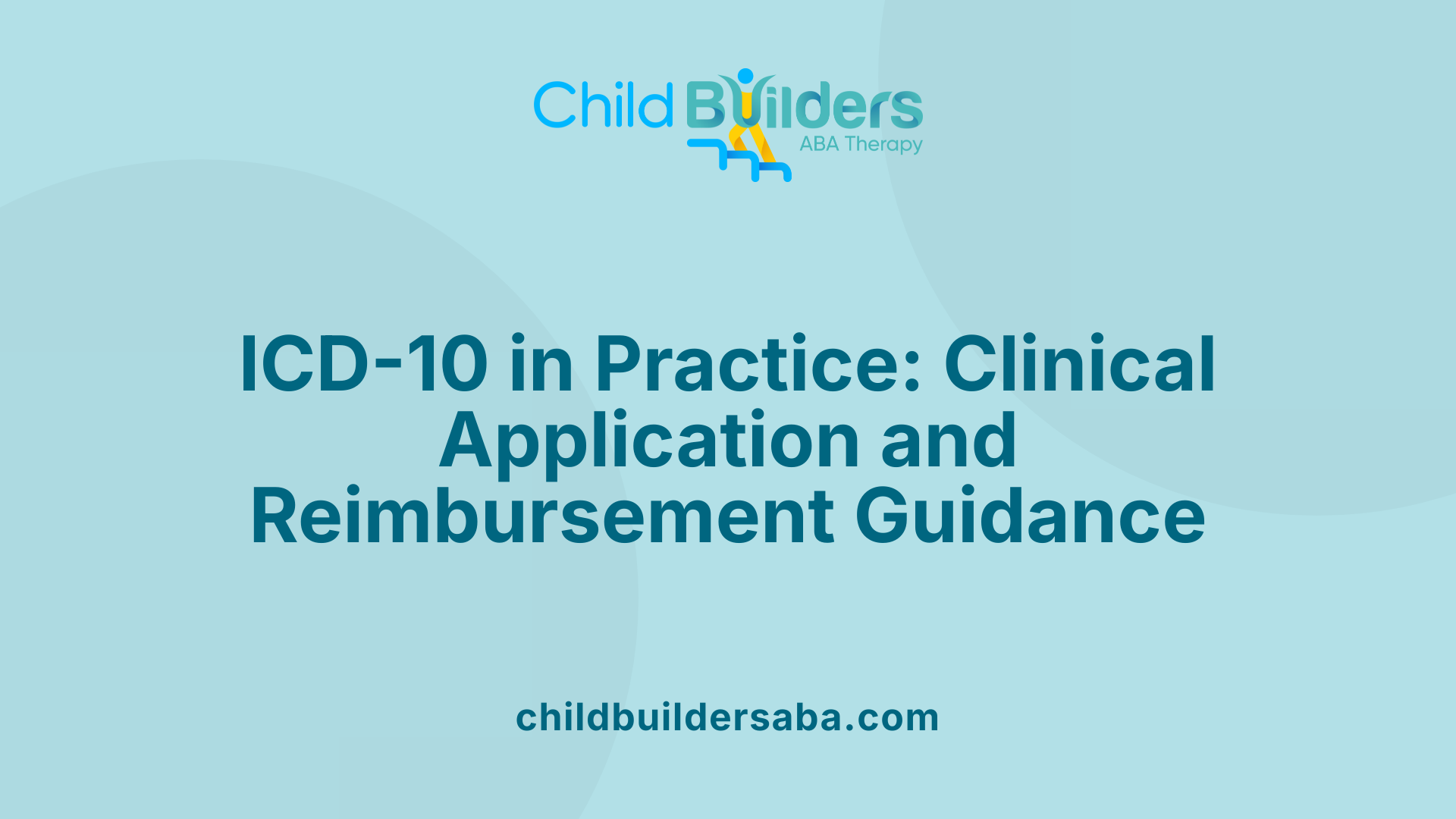 Proper application of ICD-10 codes in clinical documentation is essential for accurately describing diagnoses and ensuring appropriate reimbursement. For autism spectrum disorder (ASD), the specific ICD-10-CM code is F84.0, which covers autistic disorder, including terms like infantile autism, infantile psychosis, and Kanner’s syndrome. This code is used when the clinical assessment confirms a diagnosis of classic autism and is a billable, specific diagnosis code used for insurance claims.
Proper application of ICD-10 codes in clinical documentation is essential for accurately describing diagnoses and ensuring appropriate reimbursement. For autism spectrum disorder (ASD), the specific ICD-10-CM code is F84.0, which covers autistic disorder, including terms like infantile autism, infantile psychosis, and Kanner’s syndrome. This code is used when the clinical assessment confirms a diagnosis of classic autism and is a billable, specific diagnosis code used for insurance claims.
ICD-10 codes also play a vital role in billing, reimbursement, and processing insurance claims. Accurate coding ensures that healthcare providers are reimbursed for services such as diagnostic evaluations, speech therapy, and behavioral interventions related to ASD. For example, encounter codes like Z13.41 are used for autism screening, which can be billed separately during developmental assessments. When a patient is diagnosed with autism, the F84.0 code should be applied in conjunction with service codes for therapeutic interventions.
In cases where autism is suspected but not yet diagnosed, clinicians should utilize codes that reflect preliminary assessments, such as F80 series codes. For instance, F80.82 indicates social pragmatic communication disorder, while F80.2 covers mixed receptive-expressive language disorder. These codes help document ongoing evaluations and facilitate access to early intervention services.
Additional related codes include F84.9 for pervasive developmental disorders, unspecified, used when diagnostic details are unclear or incomplete. This allows providers to document cases where autism features are present but do not meet the full criteria for a definitive diagnosis.
Codes for screening and unspecified autism include Z13.41, which is used for encounters specifically designed for ASD screening purposes. This code falls within the Z00-Z99 range, which encompasses reasons for healthcare visits, including preventative screenings.
A comprehensive understanding of how to apply these codes ensures compliance with coding guidelines, maximizes reimbursement, and supports accurate clinical documentation. Proper coding facilitates effective communication among healthcare providers, payers, and patients.
Below is a summary table of relevant ICD-10 codes related to autism and developmental delays:
| Code | Description | Additional Notes |
|---|---|---|
| F84.0 | Autistic disorder (classic autism) | Encompasses autism spectrum disorder, infantile autism, Kanner’s syndrome |
| F84.1 | Atypical autism | Used for atypical or less defined autism presentations |
| F84.2 | Rett syndrome | A neurodevelopmental disorder primarily affecting girls |
| F84.3 | Other childhood disintegrative disorder | Rare regression disorder in childhood |
| F84.5 | Asperger syndrome | Mild autism spectrum disorder without language delay |
| F84.9 | Pervasive developmental disorder, unspecified | For cases where diagnosis is uncertain or incomplete |
| Z13.41 | Encounter for autism screening | Used during screening assessments |
| R62.50 | Unspecified lack of expected normal physiological development | For delays in childhood development |
| F80.9 | Developmental disorder of speech and language, unspecified | When speech delay is diagnosed but not classified specifically |
| F80.82 | Social pragmatic communication disorder | Specific developmental language disorder |
| F80.2 | Mixed receptive-expressive language disorder | When both language reception and expression are affected |
Understanding and correctly applying these codes supports accurate diagnosis documentation, optimal patient management, and appropriate insurance reimbursement.
Importance of Accurate and Specific Coding in Healthcare
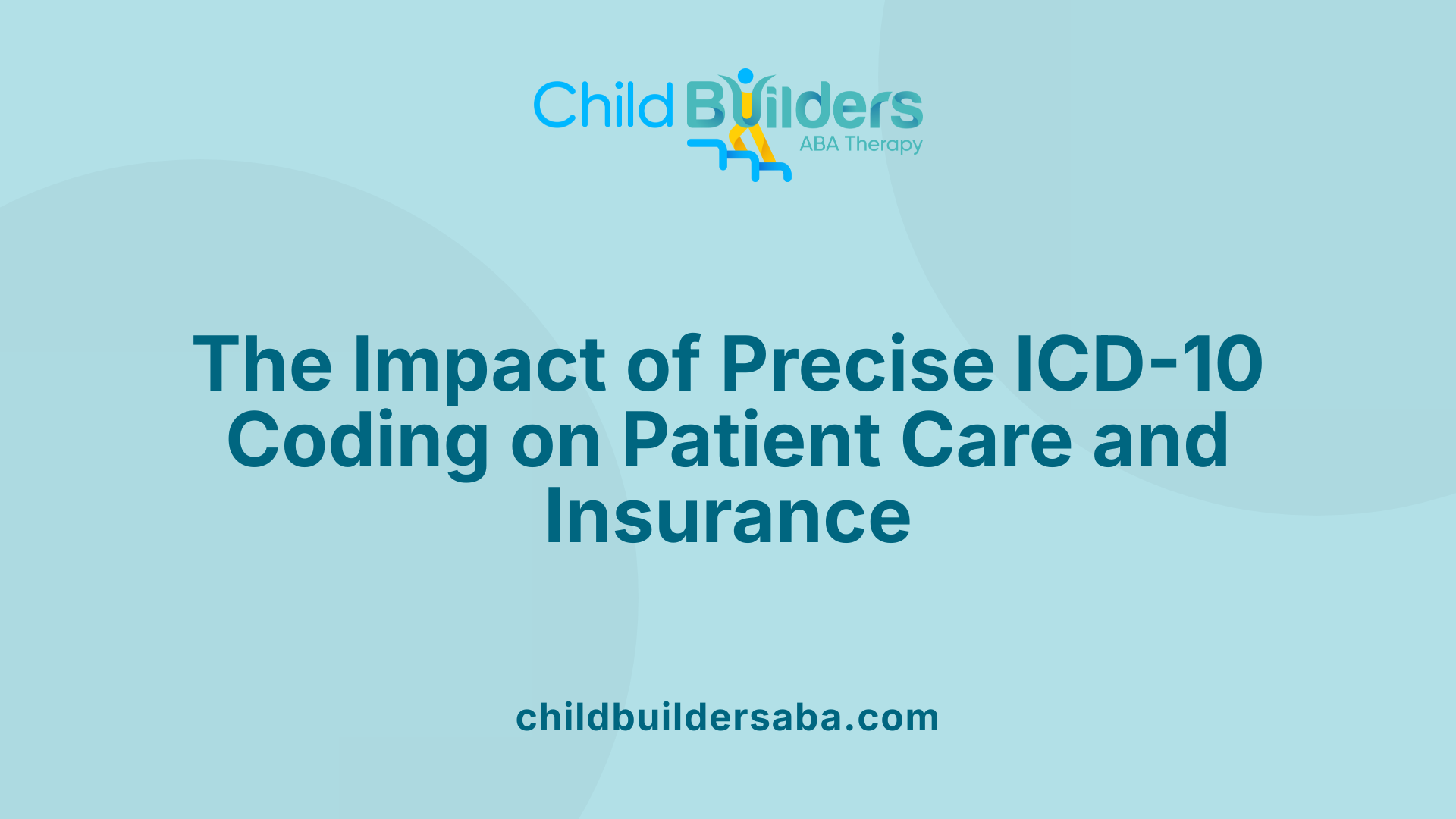
How does coding influence treatment pathways and access to services?
Accurate coding with ICD-10-CM, such as F84.0 for autistic disorder, ensures that patients receive appropriate diagnosis and tailored intervention strategies. Precise codes help clinicians communicate specific conditions, supporting early and targeted treatment plans. For example, F84.0 covers various autism spectrum disorders, including classic autism, infantile autism, and Kanner's syndrome, guiding clinicians to implement suitable therapies.
Detailed documentation improves the likelihood of patients gaining access to specialized services, therapies, and support programs dedicated to their specific diagnosis. It also facilitates referrals and interdisciplinary collaboration, which are crucial for comprehensive ASD management.
How does coding affect reimbursement and insurance claim processing?
Using the correct ICD-10 code directly influences the reimbursement process. F84.0 is a billable and specific diagnosis code keyed into insurance systems for coverage purposes. Proper identification ensures that healthcare providers are compensated for services delivered, such as diagnostic assessments, speech therapy, behavioral interventions, and other supportive care.
Codes like F84.0 and related mental health codes are used in tandem with CPT (Current Procedural Terminology) codes to streamline billing. Accurate coding minimizes claim denials or delays, ensuring financial sustainability for healthcare providers and continued access for patients.
What are the documentation requirements for codes like F84.0 and F84.5?
Clinical documentation must support the chosen diagnosis code. For F84.0, clinicians need to record evidence of impairments in social interaction, communication, and repetitive behaviors, noting onset before age three. For F84.5, documentation should specify the absence of significant delays in language and cognitive development, distinguishing it from other pervasive developmental disorders.
Detailed notes should include behavioral assessments, developmental history, and clinical observations. When coding for screening or developmental concerns, such as with Z13.41, documentation must detail the purpose of the encounter.
| Code | Description | Differentiating Feature |
|---|---|---|
| F84.0 | Autistic disorder | Classic autism with significant social and communicative impairment |
| F84.1 | Atypical autism | Symptoms do not meet all criteria for F84.0 |
| F84.5 | Asperger’s syndrome | No significant language or cognitive delays |
| F84.9 | Unspecified autism | Diagnostic uncertainty or incomplete information |
Thorough documentation ensures precise coding, which is vital for diagnosis confirmation, legal, and insurance purposes.
Summary and Future Perspectives on ICD-10 and Autism Coding
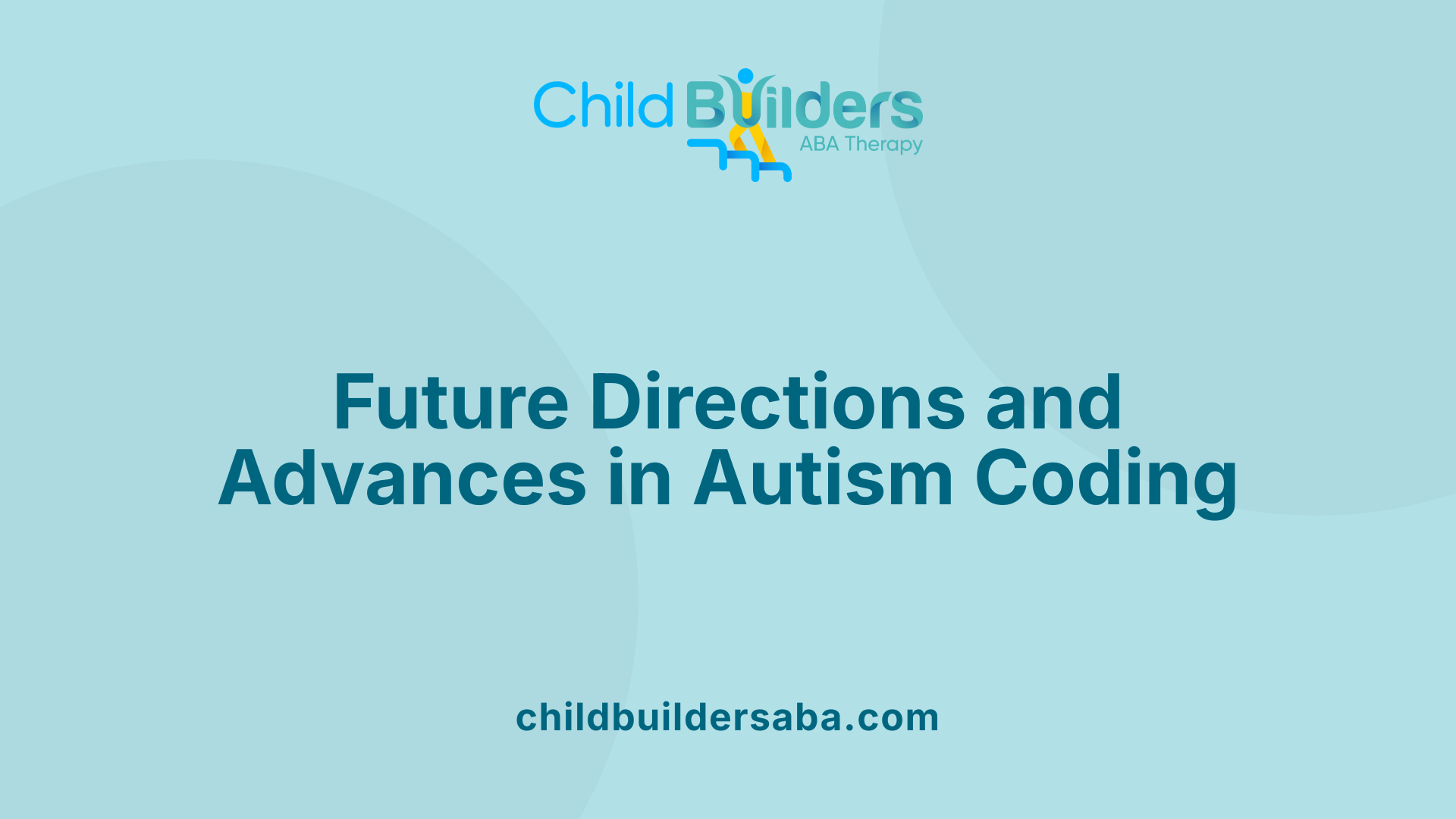
What is the ICD-10 diagnosis code for autism?
The primary ICD-10-CM diagnosis code for autism is F84.0, which includes various related conditions like infantile autism, infantile psychosis, and Kanner’s syndrome. This code is used to formally document autistic disorder for clinical and billing purposes. Physicians often use additional codes, such as F84.5 for Asperger’s syndrome, to specify different autism spectrum disorders.
For screening, the code Z13.41 is used for autism screening encounters, helping to identify children or adults who may require further evaluation.
In practice, clinicians typically report at least two diagnostic codes: F84.0 for the primary diagnosis and R48.8, which relates to symbolic dysfunctions like social communication issues. This comprehensive coding supports accurate diagnosis, treatment planning, and reimbursement.
As our understanding of autism evolves, the ICD-10 system continues to facilitate precise documentation of various conditions, enabling better patient care and resource allocation. Proper coding depends on clinical assessments aligned with DSM-5 criteria and payer-specific requirements.
Although ICD-10 provides a broad classification, future updates might refine categories further to match emerging scientific insights and diagnostic practices.
The Significance of Properly Applying ICD-10 Codes for Autism
Correct application of ICD-10 codes for autism spectrum disorder is essential for accurate diagnosis, effective treatment planning, and appropriate reimbursement. As our understanding of autism continues to evolve, so too may coding practices, emphasizing the need for clinicians to stay updated with new guidelines and classification updates. Proper documentation not only ensures compliance but also enhances the overall quality of patient care and supports ongoing research efforts.
References
- 2025 ICD-10-CM Diagnosis Code F84.0: Autistic disorder
- F84.0 Childhood autism - ICD-10 Version:2019
- The Right Codes for ASD-Related Services - The ASHA Leader
- ICD-10 Code for Autistic disorder- F84.0- Codify by AAPC
- 2025 ICD-10-CM Diagnosis Code F84.9
- What is the ICD Code for Autism?
- 2025 ICD-10-CM Diagnosis Code Z13.41



.jpg)

































































































